travel and stay in the Riviera Maya
Top Mayan Ruins in the Riviera Maya
The Mayan Civilization is one of the world’s most fascinating and unexplainable mysteries for its social, cultural, astrological, and political advancements
The Mayan Civilization is one of the world’s most fascinating and unexplainable mysteries for its social, cultural, astrological, and political advancements

Chichen Itza, one of the “Seven Wonders of the World,” is home to towering temples, sacred sinkholes, and curious Mayan ballcourts. Centrally located in the Yucatan Peninsula, this magnificent place is visited by 2.5 million people each year, and it’s within a day-tripping distance from major destinations in the Yucatan Peninsula.
Chichen Itza covers 740 acres, and you can find several Mayan pyramids and unique Mayan archeological sites. Upon entering Chichen Itza, the first pyramid you see is El Castillo (AKA the Temple of Kukulcan); this is the Chichen Itza pyramid you’ve seen in photos. Other notable sites include the Temple of the Warriors, Group of a Thousand Columns, El Caracol Observatory, and Sacred Cenote.
You will pay to get in when arriving at the Chichen Itza entrance gate. Accredited tour guides are available if you want to hire one. These are independent guides. The price of the tour guide varies anywhere from $1,000-1,500 pesos ($50-75USD); just remember to bring enough pesos to pay them and arrive early to ensure you get a guide.
Keep in mind these tips to make your visit more comfortable.
Chichen Itza admission: $486 pesos ($24 USD) for foreigners, and $168 pesos ($8 USD) for Mexican Citizens
Chichen Itza Hours: Open Daily 8:00 am to 5:00 pm
We recommend you check Chichen Itza’s website to confirm the entrance fee and hours of operation.
In Chichen Itza, you can also enjoy a light and sound show at night called “Noches de Kukulcan.” The show lasts 30 minutes, and the entrance is not included.
The light and sound show is a unique experience for all audiences. In addition, it offers a different aspect of the Mayan culture. So if you visit Chichen Itza, don’t miss the show.
From Cancun: 3 hours
From Playa del Carmen: 2 hours and a half
From Merida: 1 hour and a half
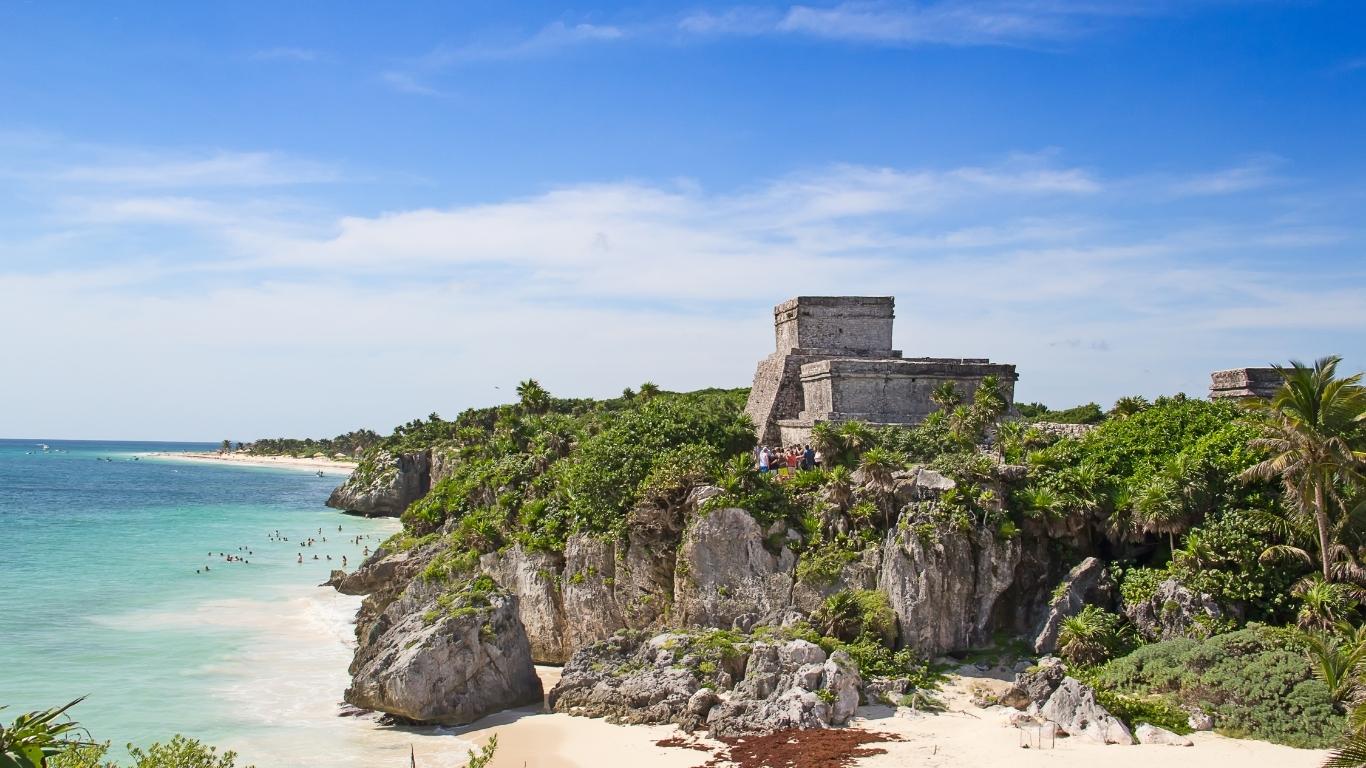
Tulum is the 3rd most visited archaeological site in Mexico, located close to major destinations in the Yucatan Peninsula. However, you can stay in Tulum check the Best Airbnb and Home Rentals in Tulum.
Tulum was one of the last Mayan inhabited cities during the arrival of the Spanish conquistadors in 1518. The City was an important port between Mexico and Central America. Tulum means “wall” in the Mayan language, but research suggests that the Tulum was called Zama (dawn).
Tulum is surrounded by walls that are 380 meters long, 200 meters wide, and 6 meters in height that protect about 60 structures. In this unique Mayan City lived around ten thousand inhabitants who traded with other cities in the region. The City stands on a rocky promontory overlooking the Caribbean Sea.
The pyramids of Tulum are small compared to others, and most monuments had ceremonial functions. Nevertheless, these are some of the most important monuments.
El Castillo (The Castle) is one of the largest groups of buildings in Tulum, and it’s the City’s most imposing building and was, without a doubt, the most important.
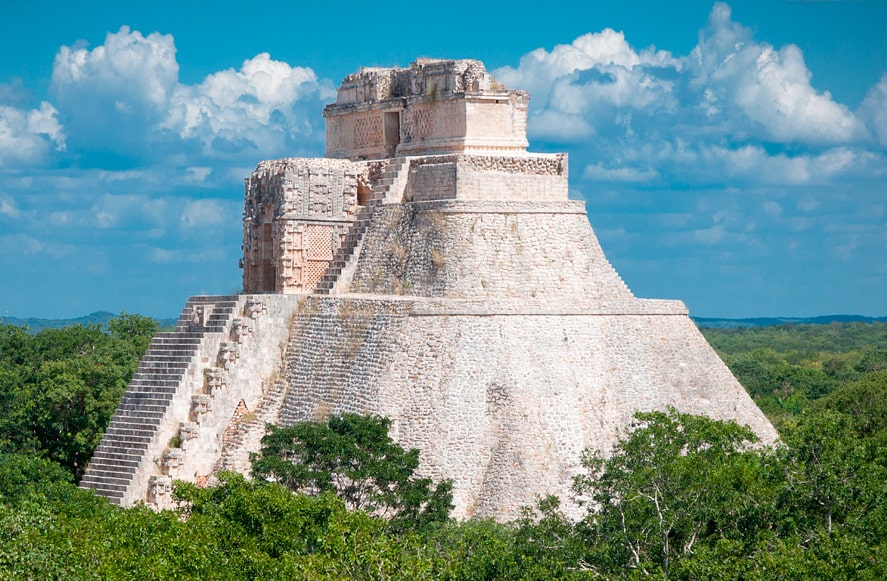
As you pass the temples entering further into the site toward the sea, you will encounter another relatively small building called Casa del Cenote (The House of the Well). This structure was built over a cave containing water (cenote), as the name suggests.
Templo del Dios Descendente (Temple of the Descending God) is one of the most beautiful temples in Tulum. This temple gets its name from a sculpture that represents a god-human wearing a headdress, descending from the heavens, and holding an object of some kind.
El Palacio (The Palace) served as the residence of Tulum‘smost important inhabitants. There are benches around the walls used as seats and probably as beds.
Templo de las Pinturas (Temple of the Paintings) is the best-preserved temple in Tulum and takes its name from the colored murals on one of its inner walls.
From Cancun: 2 hours
From Playa del Carmen: 1 hour
From Merida: 3 hours and a half
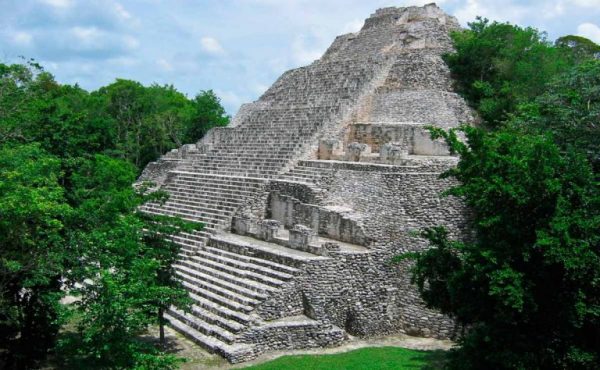
The archaeological site of Coba is surrounded by five lakes, and it is still largely hidden by sub-tropical vegetation. It contains about 6500 structures spread over nearly 70 km (112 miles). This archeological site is one of the most important sites in the Yucatán Peninsula that can only be compared with Chichen Itza, its eternal rival. Archaeologists believe that Cobá had a population of 50 000 inhabitants (and possibly more) at its peak.
The City is divided into different sets with a chronological relationship between them; the distance between the elements makes the visit hard on the feet, so it is advisable to rent a bike.
One of the main attractions is the Nohoch Mul pyramid, the tallest in the Yucatan Peninsula. If you climb to the top, you can see an excellent view of the jungle and the surrounding ruins.
Coba is perfect for having a relaxing day. You can enjoy both the archeological site and refresh yourself in the two lakes located at the site.
Coba hours: Open Daily 8:00 am to 5:00 pm
Visit length: 3 Hours
From Cancun: 2 hours
From Playa del Carmen: 1 hour and 30 minutes
From Merida: 3 hours
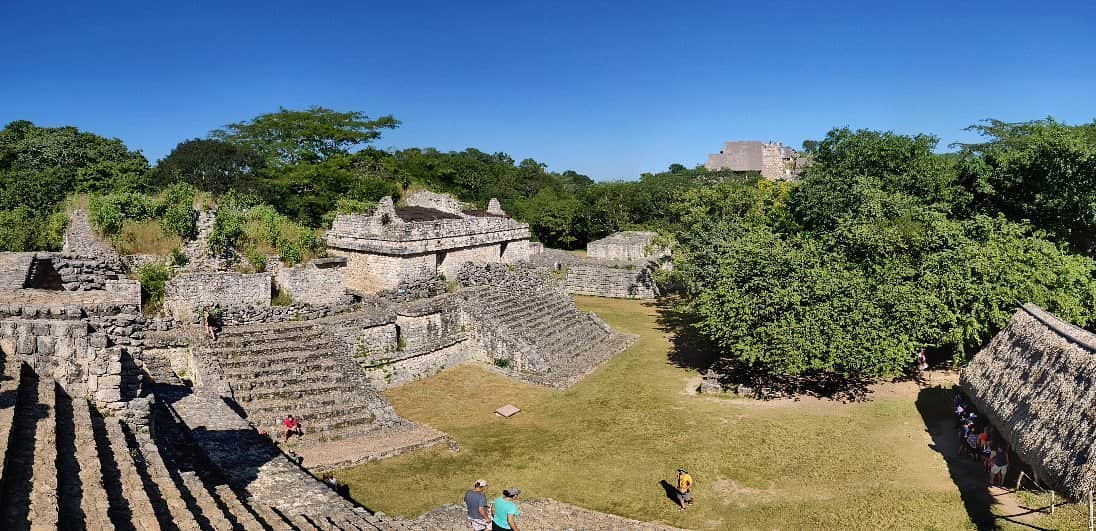
Ek Balam Mayan ruins are located about two hours from Cancun and Tulum and just a short drive from Valladolid, Mexico. As one of Mexico’s more off-the-beaten-path Mayan ruins, it’s not uncommon to have the place all to yourself.
This is a visually attractive site, with thatched roofs covering many of the pyramids combined with a gorgeous contrast with the stone pyramids.
Don’t miss the elaborately carved stone statues tucked away beneath the thatched overhangs at the interior of the building.
For some spectacular jungle views of the surrounding area, you can climb the main pyramid at Ek Balam, the Great Acropolis.
Not too far from Tulum, you can find the Muyil Ruins. These ruins look totally different. At Muyil, you’ll see what is known as Peten architecture, with steep-walled pyramids.
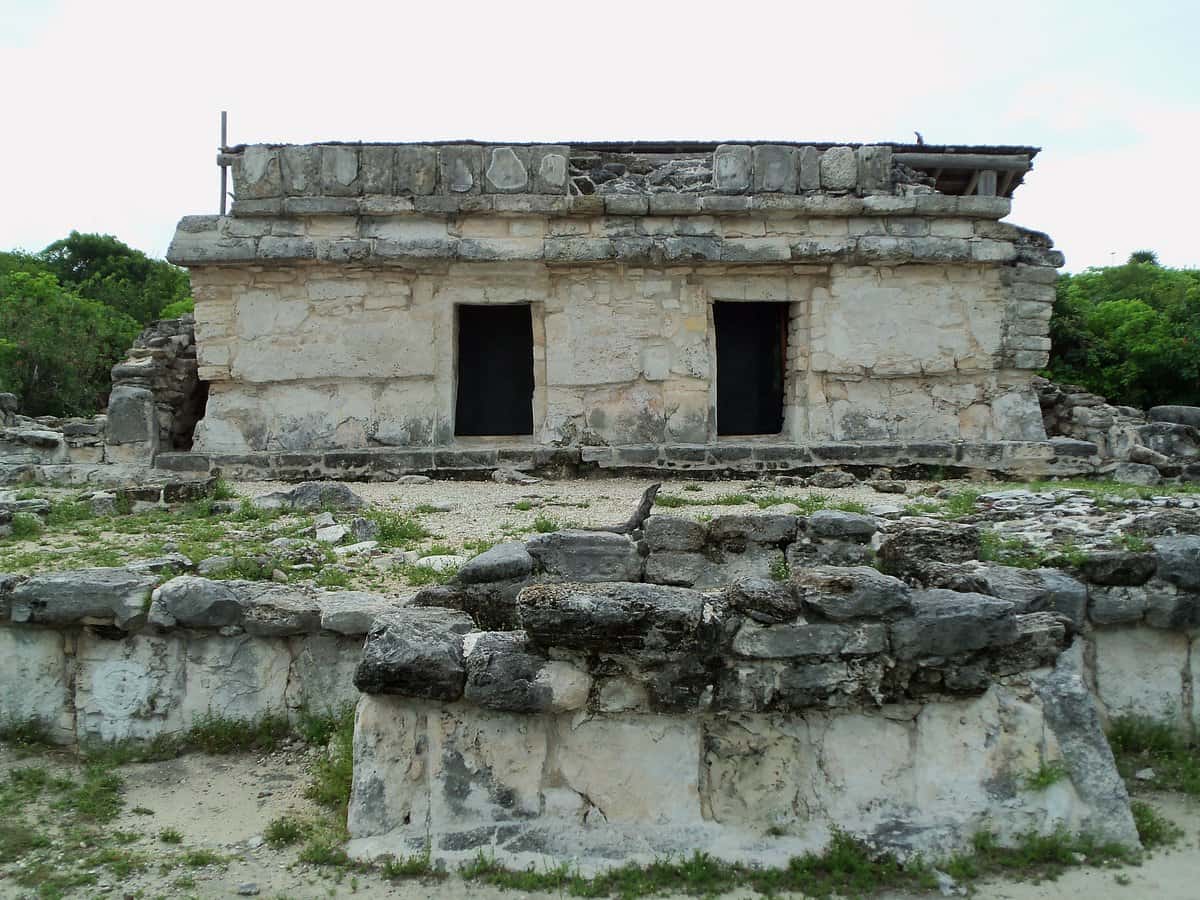
Located right in Cancun’s Zona Hotelera, you’ll find the Mayan ruins of Kin Ich Ahau Bonil, known in Spanish as El Rey. Many archeologists and historians believe the remains of a Mayan king are buried at this Mayan Ruins Cancun site.
This is a small site; it has about 45 structures on it. The most important is Structure 2where the original pyramid’s base once sat. In total, plan to spend about 30-45 minutes here.
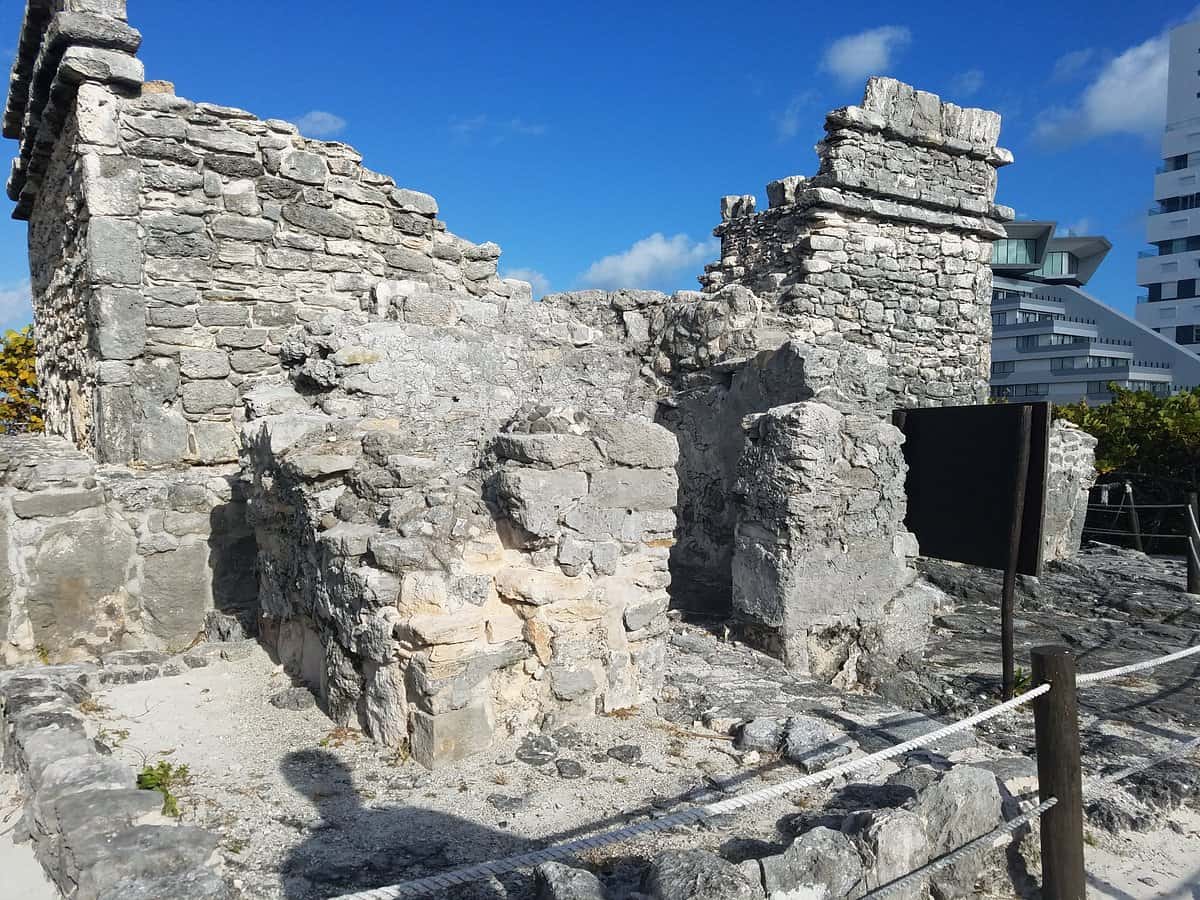
Yamil Lu’um, is located right on Cancun Beach. It is just a single structure that sits in a grassy area.
The Yamil Lu’um Mayan ruins make for great photos, with the world-famous beach from Cancun in the background.
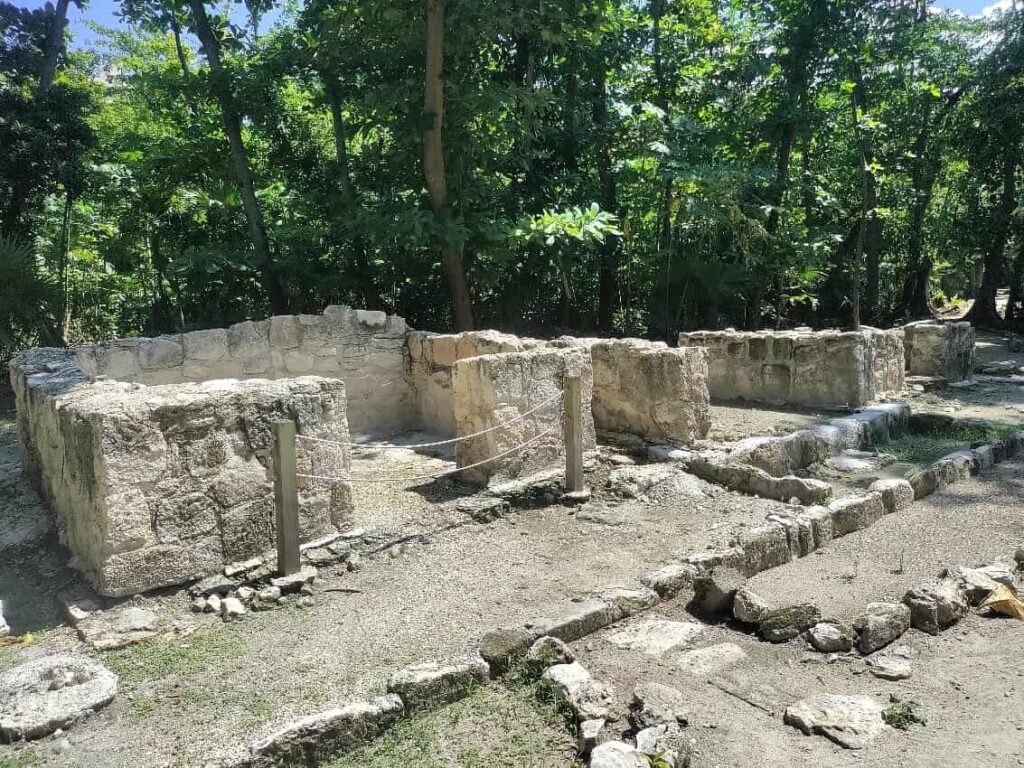
Located just minutes from El Rey, you’ll find the San Miguelito Mayan Ruins. The ruins opened to the public in 2012 and are located at the same site as the Museo Maya de Cancun.
The admission to the museum includes access to this Maya ruin site.
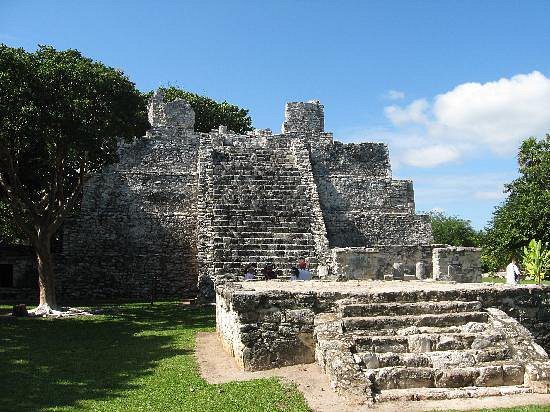
El Meco is a small site with 14 structures, including the main temple, El Castillo. Meaning (The Castle). This impressive five-level pyramid that stands 17m tall (55 feet) was believed to have been used for religious rituals and worship.
You can see the Caribbean Sea and Isla Mujeres directly from the top of the pyramid.
Given its geographic location directly in front of Isla Mujeres, historians assume El Meco once served as a point of connection with the island.
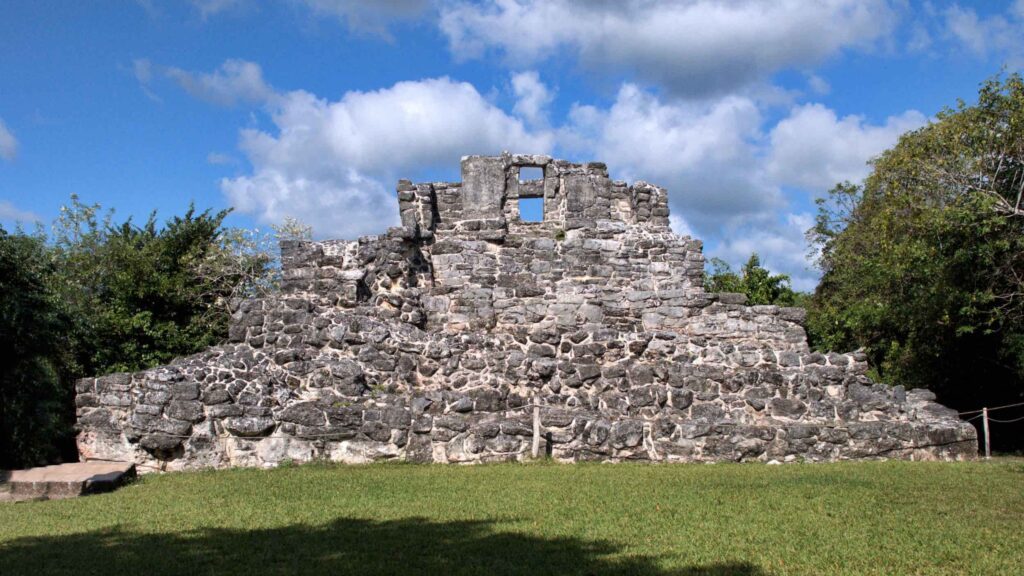
The Temple of Ixchel is located on the southern tip of Isla Mujeres. Ixchel (pronounced ik-shell) is a jaguar goddess associated with the moon, childbirth, medicine, fertility, and midwifery. Given that it sits on the highest elevation point in the entire Yucatan Peninsula and at the edge of the sea, historians say this structure functioned as a lighthouse more than a ceremonial center.
Take the 20-minute ferry ride from Cancun to Isla Mujeres to get to the island.
| Cookie | Duration | Description |
|---|---|---|
| cookielawinfo-checkbox-analytics | 11 months | This cookie is set by GDPR Cookie Consent plugin. The cookie is used to store the user consent for the cookies in the category "Analytics". |
| cookielawinfo-checkbox-functional | 11 months | The cookie is set by GDPR cookie consent to record the user consent for the cookies in the category "Functional". |
| cookielawinfo-checkbox-necessary | 11 months | This cookie is set by GDPR Cookie Consent plugin. The cookies is used to store the user consent for the cookies in the category "Necessary". |
| cookielawinfo-checkbox-others | 11 months | This cookie is set by GDPR Cookie Consent plugin. The cookie is used to store the user consent for the cookies in the category "Other. |
| cookielawinfo-checkbox-performance | 11 months | This cookie is set by GDPR Cookie Consent plugin. The cookie is used to store the user consent for the cookies in the category "Performance". |
| viewed_cookie_policy | 11 months | The cookie is set by the GDPR Cookie Consent plugin and is used to store whether or not user has consented to the use of cookies. It does not store any personal data. |